Web automation using API calls involves using an API (Application Programming Interface) to interact with a website and perform repetitive tasks such as form filling, data scraping, and automated testing. APIs provide a way for software programs to communicate with each other and exchange information. UiPath’s web automation allows users to automate repetitive tasks and processes through a visual, drag-and-drop interface. Also, users can interact with web applications using HTTP requests and API calls. API provides a way for different software applications to communicate with each other, and they are often used to automate web workflows. To perform web automation using API calls in UiPath, users must identify the API endpoints corresponding to the desired actions, configure the HTTP request with the appropriate parameters and headers, and then parse the response to extract the necessary data. Using API calls in UiPath, users can create powerful and flexible web automation workflows that save time and increase productivity.
Steps for web automation using API calls
As prerequisites, install the UiPath extension. Here we will fetch data from a specific website for creating random uses and enter those data into the second website, rpachallenge.com.
Step 1. Enter the First Name, Last Name, Email Address, and Phone Number on the rpachallenge website, then hit SUBMIT.

Step 2. In the UiPath studio, click Manage Package, and search for UiPath.WebAPI.Activities, and install it.

Step 3. Click Activities on the side panel, then drag and drop the HTTP Request activity.
Step 4. Go to the browser and copy the API URL of the website from where you want to fetch the data. Then paste it in the End point under HTTP Request Wizard.

Step 5. Click the Preview button, copy the JSON data, and paste it into the notepad for later use. Then go back to the studio and click Ok.
Step 6. To store output, open the property panel. Here create a variable JsonString in Response content under Output.
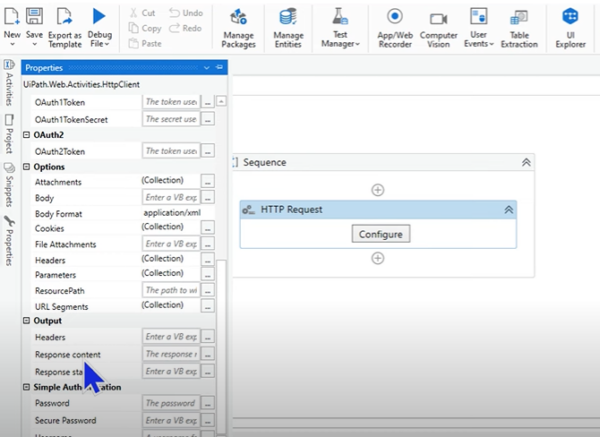
Step 7. In the Activity panel, search for Deserialize JSON and drag and drop it.
Step 8. Type JsonString in the box under Deserialize JSON to access elements in JSON format.
Step 9. From the property panel, create a variable as JsonObject in the Output.
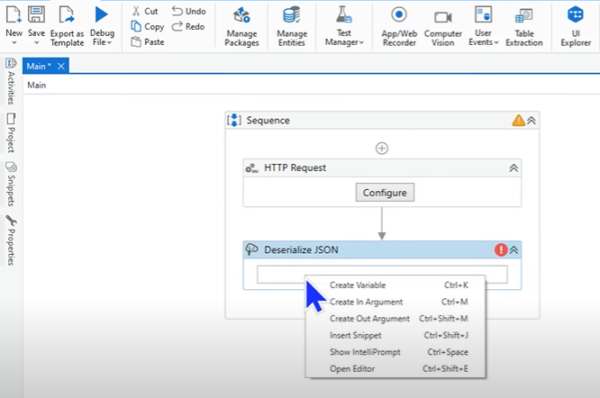
To update all this on the destination website, follow these steps.
Step 1. Go to the Activity in the studio, search, and select Use Application/Browser. Then drag and drop it.
Step 2. To indicate the target application, click on the Indicate application to automate.
Step 3. In the studio, go to Activity, search for Type Into, then drag and drag and drop it.
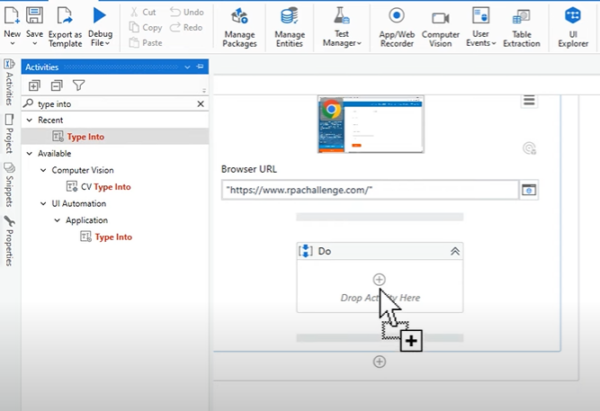
Step 4. Now copy and paste Type Into three more times.
Step 5. For the first name, click on Indicate on Chrome. Select First Name and hit Confirm.

Step 6. Type the command below into the Type this box.
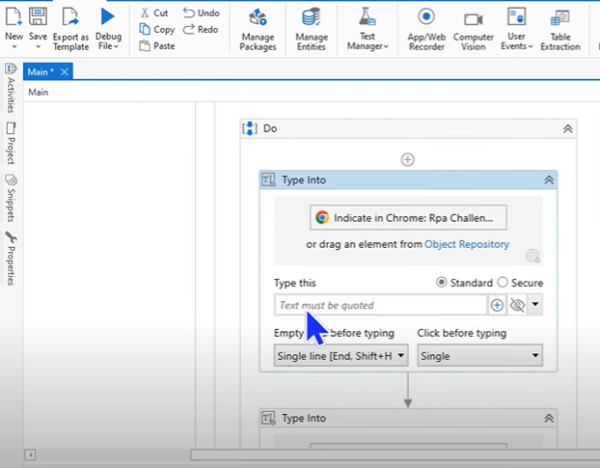
Step 7. For the last name, click on Indicate on Chrome. Select Last Name and hit Confirm. Then type the command below into the Type this box.
Step 8. For email addresses, click on Indicate on Chrome. Select Email and hit Confirm.
Step 9. Type the command below.
Step 10. For the phone number, click on Indicate on Chrome. Select Phone Number and hit Confirm.
Step 11. Type the command below.
Step 12. Click on Run.
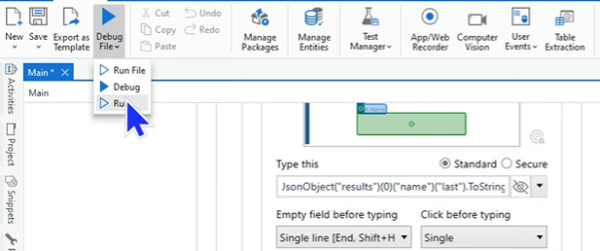
Now the web application automation is done.
Conclusion
Web automation has become essential for businesses and individuals to stream their workflows and increase productivity. UiPath’s web automation is a powerful tool for automating repetitive tasks on the web. It provides a user-friendly interface that helps users to create and deploy automation workflows quickly and easily.
We are here to make your business cost-effective and customer satisfied with a powerful tool like UiPath’s web automation.


